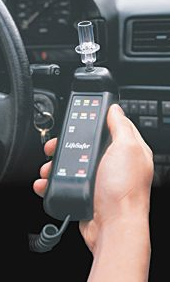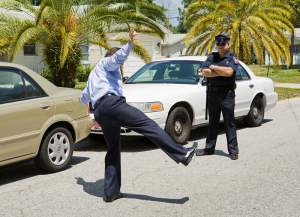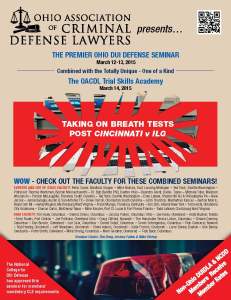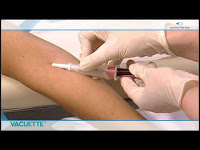 Suppose you are driving around Columbus on I-270 and an officer pulls you over for speeding. The officer gets out of his cruiser and walks up to your car. When the officer reaches your window, you see on his uniform he is from the Cincinnati Police Department. ‘That’s odd’, you think, ‘why is an officer from Cincinnati making a traffic stop in Columbus?’ Good question. A better question is this: does that traffic stop violate your Constitutional rights?
Suppose you are driving around Columbus on I-270 and an officer pulls you over for speeding. The officer gets out of his cruiser and walks up to your car. When the officer reaches your window, you see on his uniform he is from the Cincinnati Police Department. ‘That’s odd’, you think, ‘why is an officer from Cincinnati making a traffic stop in Columbus?’ Good question. A better question is this: does that traffic stop violate your Constitutional rights?
Should All Vehicles Be Equipped With Alcohol Sensors?
 How frustrating would it be if your car won’t start because you recently used mouthwash, put on cologne, or ate a cinnamon roll? That frustration could be real if the federal government ultimately requires alcohol sensors in cars. According to the Columbus Dispatch, federal officials recently announced plans to implement a technological advancement in alcohol-detecting sensors for vehicles. The government anticipates the new alcohol sensors could significantly reduce drunk driving. The sensors may also increase headaches for non-drinking drivers.
How frustrating would it be if your car won’t start because you recently used mouthwash, put on cologne, or ate a cinnamon roll? That frustration could be real if the federal government ultimately requires alcohol sensors in cars. According to the Columbus Dispatch, federal officials recently announced plans to implement a technological advancement in alcohol-detecting sensors for vehicles. The government anticipates the new alcohol sensors could significantly reduce drunk driving. The sensors may also increase headaches for non-drinking drivers.
When Are Police Permitted To Give Field Sobriety Tests?
 Imagine you are driving home on a central Ohio freeway after a late dinner and you are pulled over by a police officer. The officer says you were stopped for failing to use your turn signal when you changed lanes. The officer announces he smells the odor of alcohol and asks if you have been drinking. You did have a glass of wine with dinner. The officer then asks you to get out of the car for some field sobriety tests to “make sure you’re okay to drive”. Under what circumstances is the officer justified in doing this?
Imagine you are driving home on a central Ohio freeway after a late dinner and you are pulled over by a police officer. The officer says you were stopped for failing to use your turn signal when you changed lanes. The officer announces he smells the odor of alcohol and asks if you have been drinking. You did have a glass of wine with dinner. The officer then asks you to get out of the car for some field sobriety tests to “make sure you’re okay to drive”. Under what circumstances is the officer justified in doing this?
Supreme Court Addresses Use Of Drug Dogs At Traffic Stops
If a police officer stops you for a minor traffic violation, how long should the officer be permitted to detain you? Suppose the officer issues you a ticket or a warning for the minor traffic violation and then says he wants you to wait while he has a drug dog sniff your car? What do you say? If you say no, can the officer do it anyway?
Is Drunk Driver Responsible For Killing Drunk Man Lying In Road?
 Steven Anderson was drunk when he passed out on a rural highway. He was wearing dark clothing and went to sleep on the dark road around 1:00 am. There were no street lights in the area, and he was lying where there is a bend in the road. Darryl Saunders was drunk when he came driving around that bend. When he finally saw Anderson lying in the road, Saunders swerved to avoid him, but it was too late. He ran over Anderson, and Anderson died. Saunders’ blood alcohol concentration was tested at .150. Is Saunders criminally responsible for killing Anderson?
Steven Anderson was drunk when he passed out on a rural highway. He was wearing dark clothing and went to sleep on the dark road around 1:00 am. There were no street lights in the area, and he was lying where there is a bend in the road. Darryl Saunders was drunk when he came driving around that bend. When he finally saw Anderson lying in the road, Saunders swerved to avoid him, but it was too late. He ran over Anderson, and Anderson died. Saunders’ blood alcohol concentration was tested at .150. Is Saunders criminally responsible for killing Anderson?
Blood Tests Thrown Out In Ohio DUI/OVI Cases When Law Enforcement Fails To Follow Rules
 Sometimes rules are not made to be broken. When it comes to cases of alleged driving under the influence, there are rules for drivers, and there are rules for the government. When a driver breaks the rules, there are consequences. There are also consequences when the government breaks the rules. When the broken rules relate to blood tests, the blood tests cannot be used as evidence.
Sometimes rules are not made to be broken. When it comes to cases of alleged driving under the influence, there are rules for drivers, and there are rules for the government. When a driver breaks the rules, there are consequences. There are also consequences when the government breaks the rules. When the broken rules relate to blood tests, the blood tests cannot be used as evidence.
What Are The Differences Between Vehicular Homicide And Aggravated Vehicular Homicide In Ohio?
 Ohio has several variations of what is commonly known as vehicular homicide. Generally, vehicular homicide is causing the death of another person while operating a vehicle. In the Ohio Revised Code, there are actually three separate offenses: (1) Aggravated Vehicular Homicide; (2) Vehicular Homicide; and (3) Vehicular Manslaughter. The offenses defined in the Ohio Revised Code are distinguished by the driver’s conduct (actus reus) and the driver’s state of mind (mens rea). The particular offense with which a defendant is convicted makes a substantial difference in the sentence imposed by the court.
Ohio has several variations of what is commonly known as vehicular homicide. Generally, vehicular homicide is causing the death of another person while operating a vehicle. In the Ohio Revised Code, there are actually three separate offenses: (1) Aggravated Vehicular Homicide; (2) Vehicular Homicide; and (3) Vehicular Manslaughter. The offenses defined in the Ohio Revised Code are distinguished by the driver’s conduct (actus reus) and the driver’s state of mind (mens rea). The particular offense with which a defendant is convicted makes a substantial difference in the sentence imposed by the court.
Ohio DUI/OVI Seminar-Best In The Midwest
 ‘Best in the Midwest’ has become one of the slogans associated with the annual DUI/OVI seminar presented by the Ohio Association of Criminal Defense Lawyers (OACDL). A speaker from another state poked fun at the slogan by asking, “isn’t this the only DUI seminar in the Midwest?” I’m sure there are plenty of other DUI seminars in the Midwest, but this is the only one I know of which is nationally recognized and approved for credit from the National College for DUI Defense (NCDD) and the national DUI Defense Lawyers Association (DUIDLA). The seminar is two-and-a-half days and draws speakers and attendees from around the country. Whether it’s the best or not, the seminar held last week in Columbus was outstanding.
‘Best in the Midwest’ has become one of the slogans associated with the annual DUI/OVI seminar presented by the Ohio Association of Criminal Defense Lawyers (OACDL). A speaker from another state poked fun at the slogan by asking, “isn’t this the only DUI seminar in the Midwest?” I’m sure there are plenty of other DUI seminars in the Midwest, but this is the only one I know of which is nationally recognized and approved for credit from the National College for DUI Defense (NCDD) and the national DUI Defense Lawyers Association (DUIDLA). The seminar is two-and-a-half days and draws speakers and attendees from around the country. Whether it’s the best or not, the seminar held last week in Columbus was outstanding.
Motorcyclist With No Alcohol In His Blood Waits Five Months Before DUI Charge Is Dismissed
 In September of 2014, CW was driving his motorcycle in northwestern New York and collided with another motorcycle. A police officer responded to the accident scene and reportedly noticed the odor of alcohol on CW. The officer asked CW to take a breath test, and CW refused. The officer ultimately obtained a blood sample from CW and charged him with DWI (known as OVI in Ohio). The officer then sent the blood sample to be tested. The test revealed a blood alcohol content of 0.00. Last week, five months after CW was charged with DWI, the case was finally dismissed, as reported by the Genesee Sun.
In September of 2014, CW was driving his motorcycle in northwestern New York and collided with another motorcycle. A police officer responded to the accident scene and reportedly noticed the odor of alcohol on CW. The officer asked CW to take a breath test, and CW refused. The officer ultimately obtained a blood sample from CW and charged him with DWI (known as OVI in Ohio). The officer then sent the blood sample to be tested. The test revealed a blood alcohol content of 0.00. Last week, five months after CW was charged with DWI, the case was finally dismissed, as reported by the Genesee Sun.
How MADD Rates Ohio On Drunk Driving Prevention
 Mothers Against Drunk Driving (MADD) recently released its “2015 Report To The Nation”. The report rates the efforts of each of the 50 states to prevent drunk driving. In the report, MADD uses a five-star system of measures which can be undertaken to prevent drunk driving fatalities. Ohio receives four stars.
Mothers Against Drunk Driving (MADD) recently released its “2015 Report To The Nation”. The report rates the efforts of each of the 50 states to prevent drunk driving. In the report, MADD uses a five-star system of measures which can be undertaken to prevent drunk driving fatalities. Ohio receives four stars.
 Columbus OVI/DUI Attorney Blog
Columbus OVI/DUI Attorney Blog


